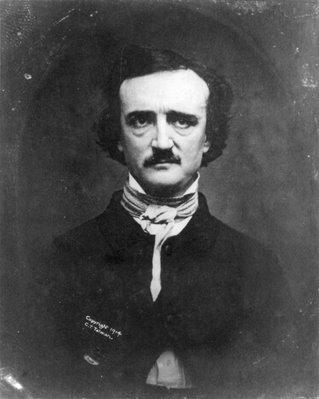

Daguerrotype by Louis Daguerre 1839 -- Click To Enlarge
People believe that this is the first outdoor photograph taken of a human. Louis Daguerre, one of the early pioneers of photography and photographic technology, shot this "daguerrotype" in 1839. Daguerrotypes[1] were (sometimes) made of people in the studio--if they could remain stock still for minutes), but people never appeared in street scenes of landscapes. Due to the long exposure times required for an image, all moving objects became invisible.
Somehow this guy stood still, or he was posed by Louis Daguerre and held the pose for a few minutes.
[1] According to The Wikipedia "The daguerreotype was a positive-only process allowing no reproduction of the picture. Preparation of the plate prior to image exposure resulted in the formation of a layer of photo-sensitive silver halide, and exposure to a scene or image through a focussing lens formed a latent image. The latent image was made visible, or "developed", by placing the exposed plate over a slightly heated (about 75°C) cup of mercury. The mercury vapour condensed on those places where the exposure light was most intense, in proportion with the areas of highest density in the image. This produced a picture in an amalgam, the mercury vapour attaching itself to the altered silver iodide. Removal of the mercury image by heat validates this chemistry. The developing box was constructed to allow inspection of the image through a yellow glass window while it was being developed.
The next operation was to "fix" the photographic image permanently on the plate by dipping in a solution of hyposulphite of soda – known as "fixer" or "hypo". The image produced by this method is so delicate it will not bear the slightest handling. Practically all daguerreotypes are protected from accidental damage by a glass-fronted case. It was discovered by experiment that treating the plate with heated gold chloride tones and strengthens the image, although it remains quite delicate and requires a well-sealed case to protect against touch as well as oxidation of the fine silver deposits forming the blacks in the image. The best-preserved daguerreotypes dating from the nineteenth century are sealed in robust glass cases evacuated of air and filled with a chemically inert gas, typically nitrogen."

Click to enlarge this daguerrotype of Edgar Allen Poe from 1848.
Does he look completely insane--or what?
---o0o---
























